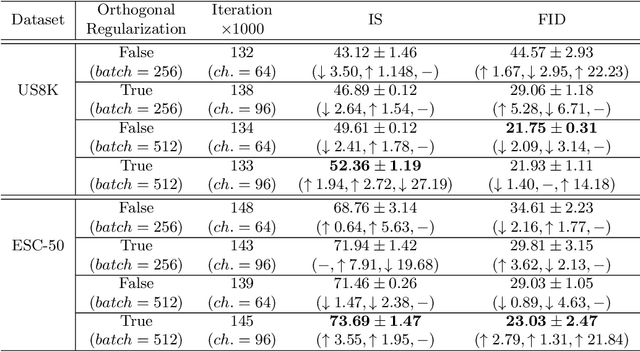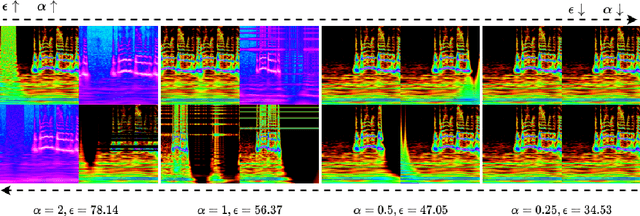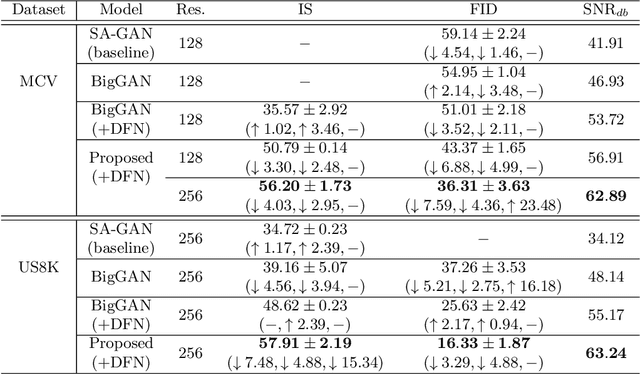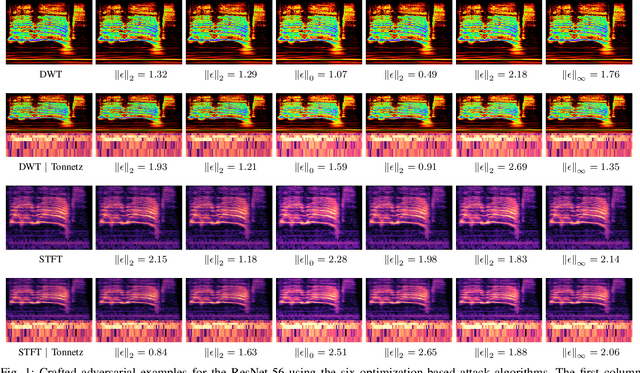Raymel Alfonso Sallo
Conditioning Trick for Training Stable GANs
Oct 12, 2020



Abstract:In this paper we propose a conditioning trick, called difference departure from normality, applied on the generator network in response to instability issues during GAN training. We force the generator to get closer to the departure from normality function of real samples computed in the spectral domain of Schur decomposition. This binding makes the generator amenable to truncation and does not limit exploring all the possible modes. We slightly modify the BigGAN architecture incorporating residual network for synthesizing 2D representations of audio signals which enables reconstructing high quality sounds with some preserved phase information. Additionally, the proposed conditional training scenario makes a trade-off between fidelity and variety for the generated spectrograms. The experimental results on UrbanSound8k and ESC-50 environmental sound datasets and the Mozilla common voice dataset have shown that the proposed GAN configuration with the conditioning trick remarkably outperforms baseline architectures, according to three objective metrics: inception score, Frechet inception distance, and signal-to-noise ratio.
Adversarially Training for Audio Classifiers
Aug 26, 2020



Abstract:In this paper, we investigate the potential effect of the adversarially training on the robustness of six advanced deep neural networks against a variety of targeted and non-targeted adversarial attacks. We firstly show that, the ResNet-56 model trained on the 2D representation of the discrete wavelet transform appended with the tonnetz chromagram outperforms other models in terms of recognition accuracy. Then we demonstrate the positive impact of adversarially training on this model as well as other deep architectures against six types of attack algorithms (white and black-box) with the cost of the reduced recognition accuracy and limited adversarial perturbation. We run our experiments on two benchmarking environmental sound datasets and show that without any imposed limitations on the budget allocations for the adversary, the fooling rate of the adversarially trained models can exceed 90\%. In other words, adversarial attacks exist in any scales, but they might require higher adversarial perturbations compared to non-adversarially trained models.
Improving Stability of LS-GANs for Audio and Speech Signals
Aug 12, 2020



Abstract:In this paper we address the instability issue of generative adversarial network (GAN) by proposing a new similarity metric in unitary space of Schur decomposition for 2D representations of audio and speech signals. We show that encoding departure from normality computed in this vector space into the generator optimization formulation helps to craft more comprehensive spectrograms. We demonstrate the effectiveness of binding this metric for enhancing stability in training with less mode collapse compared to baseline GANs. Experimental results on subsets of UrbanSound8k and Mozilla common voice datasets have shown considerable improvements on the quality of the generated samples measured by the Fr\'echet inception distance. Moreover, reconstructed signals from these samples, have achieved higher signal to noise ratio compared to regular LS-GANs.
 Add to Chrome
Add to Chrome Add to Firefox
Add to Firefox Add to Edge
Add to Edge